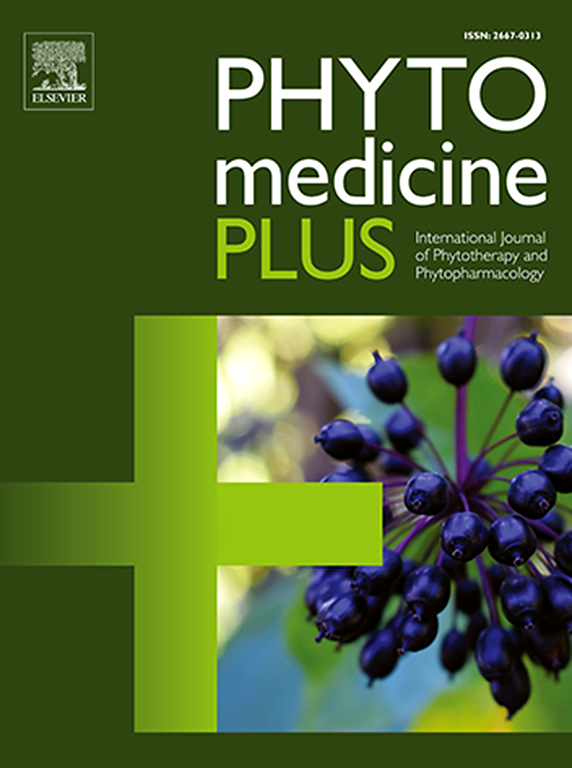Exploring the antidiabetic potential of Bridelia tomentosa blume against streptozotocin (STZ)-induced diabetic Sprague-Dawley rats
Q3 Pharmacology, Toxicology and Pharmaceutics
引用次数: 0
Abstract
Diabetes is a long-term metabolic disease marked by consistently elevated blood glucose levels resulting from inadequate insulin production, impaired insulin action, or a combination of both. Despite the availability of antidiabetic drugs, their undesirable effects and restricted availability emphasize the necessity for alternative therapies. Bridelia tomentosa, a medicinal plant with reported antioxidant and hepatoprotective properties, remains unexplored for its potential as an antidiabetic agent. This study investigates the impact of B. tomentosa (BTF) methanolic fruit extract on Streptozotocin (STZ)-induced hyperglycemia in rats. Experimental hyperglycemia was induced in male Sprague-Dawley rats by administering a 60 mg/kg intraperitoneal dose of STZ. The rats were divided into five groups: healthy controls, untreated diabetics, glibenclamide-treated (10 mg/kg), and BTF-treated groups receiving 250 or 500 mg/kg. The effects of BTF extract on fasting blood glucose, lipid profiles, renal and liver function, oxidative stress markers, and pancreatic tissue morphology were evaluated. Additionally, the activities of antioxidant enzymes and lipid peroxidation levels were also measured. Results indicated that BTF extracts reduce fasting blood glucose, adjust glucose tolerance, and restore body weight in STZ-treated animals. These extracts have also adjusted lipid levels, reduced indicators of hepatic and renal dysfunction, and enhanced antioxidant enzyme activities, while decreasing malondialdehyde (MDA) levels. Histological analysis showed protective effects on pancreatic β-cells. In conclusion, B. tomentosa fruit extract demonstrated significant antihyperglycemic, antioxidant, and organ-protective effects, suggesting its potential as a natural alternative for diabetes treatment. However, further research is necessary to investigate its molecular mechanisms and potential therapeutic applications.
探讨毛毛串珠菌对链脲佐菌素(STZ)诱导的糖尿病大鼠的降糖作用
糖尿病是一种长期的代谢性疾病,其特征是由于胰岛素分泌不足、胰岛素作用受损或两者兼有导致血糖水平持续升高。尽管有抗糖尿病药物,但它们的不良影响和有限的可用性强调了替代疗法的必要性。毛蕊花是一种药用植物,据报道具有抗氧化和保护肝脏的特性,但其作为抗糖尿病药物的潜力尚未得到开发。本研究探讨了毛绒毛芽胞杆菌(BTF)甲醇果提取物对链脲佐菌素(STZ)诱导的大鼠高血糖的影响。雄性sd大鼠腹腔注射STZ 60 mg/kg诱导实验性高血糖。将大鼠分为五组:健康对照组、未经治疗的糖尿病患者、格列苯脲组(10 mg/kg)和btf组(250或500 mg/kg)。观察BTF提取物对大鼠空腹血糖、血脂、肝肾功能、氧化应激指标及胰腺组织形态的影响。同时测定抗氧化酶活性和脂质过氧化水平。结果表明,BTF提取物可降低stz处理动物的空腹血糖,调节糖耐量,恢复体重。这些提取物还可以调节血脂水平,降低肝肾功能障碍指标,增强抗氧化酶活性,同时降低丙二醛(MDA)水平。组织学分析显示对胰腺β细胞有保护作用。综上所述,毛毛莲果实提取物具有显著的抗高血糖、抗氧化和器官保护作用,提示其有可能成为治疗糖尿病的天然替代品。然而,其分子机制和潜在的治疗应用还有待进一步研究。
本文章由计算机程序翻译,如有差异,请以英文原文为准。
求助全文
约1分钟内获得全文
求助全文
来源期刊

Phytomedicine Plus
Medicine-Complementary and Alternative Medicine
CiteScore
3.70
自引率
0.00%
发文量
178
审稿时长
81 days
期刊介绍:
 求助内容:
求助内容: 应助结果提醒方式:
应助结果提醒方式:


